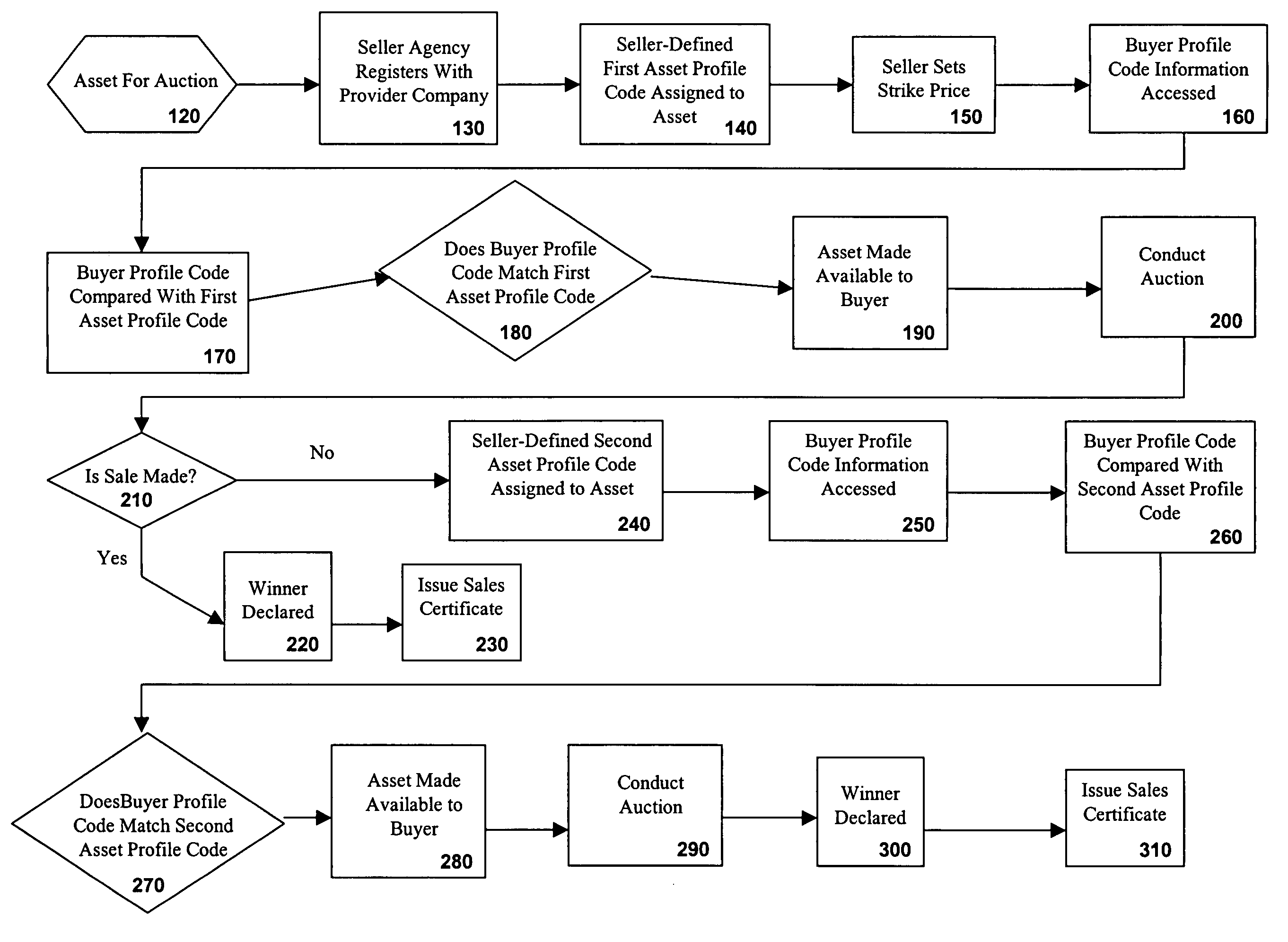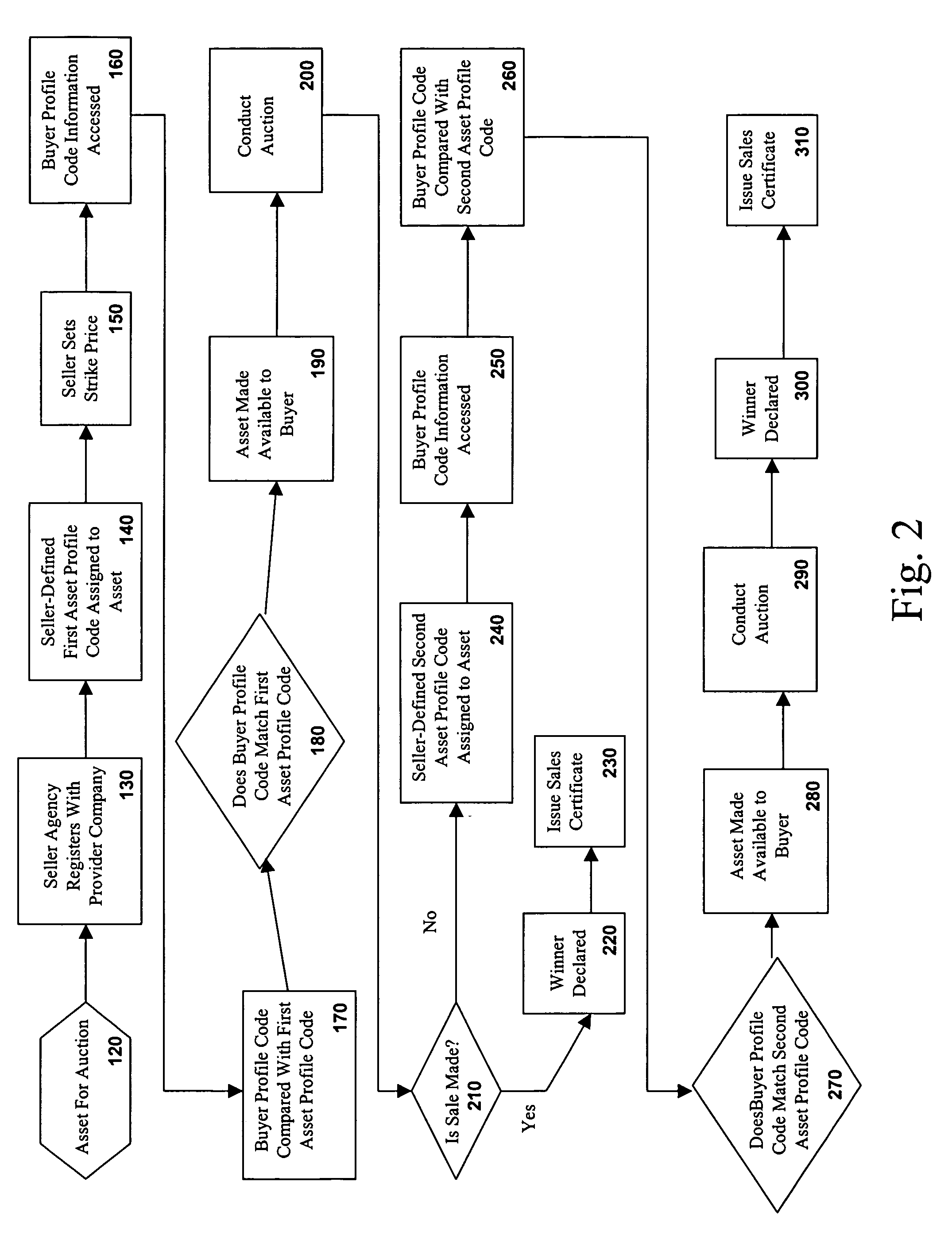Method for conducting a computerized government auction
a technology of computerized auction and auction, applied in the field of computerized auction, can solve the problems of increasing the cost associated with asset disposition process, limiting the access to a particular asset to people with certain licenses or permits, and not being adequately addressed, so as to maximize potential revenue and minimize the processing burden of the government agency
- Summary
- Abstract
- Description
- Claims
- Application Information
AI Technical Summary
Benefits of technology
Problems solved by technology
Method used
Image
Examples
Embodiment Construction
[0024]As shown in FIG. 1, in the preferred embodiment, the method of the present invention takes place over computers communicatively linked by the Internet 10; however any linked computer system may be utilized. Various buyers, including government agencies 30 and the general public 40 are connected to the provider company's servers. Various government agency sellers 50, 60, and 70 are also connected to the provider company's servers. In a preferred embodiment, any particular government agency seller 70 that needs to dispose of a large number of assets may have a dedicated Client Asset Server (“CAS”) 80.
[0025]As shown in FIG. 2, the method of the present invention comprises a tiered restriction process for disposing of an asset for auction 120 comprising several steps including the step wherein the seller indicates an asset profile code 140 that serves to restrict what buyers are eligible to purchase the government asset. The other key feature discussed below is the matching proces...
PUM
 Login to View More
Login to View More Abstract
Description
Claims
Application Information
 Login to View More
Login to View More - R&D
- Intellectual Property
- Life Sciences
- Materials
- Tech Scout
- Unparalleled Data Quality
- Higher Quality Content
- 60% Fewer Hallucinations
Browse by: Latest US Patents, China's latest patents, Technical Efficacy Thesaurus, Application Domain, Technology Topic, Popular Technical Reports.
© 2025 PatSnap. All rights reserved.Legal|Privacy policy|Modern Slavery Act Transparency Statement|Sitemap|About US| Contact US: help@patsnap.com



